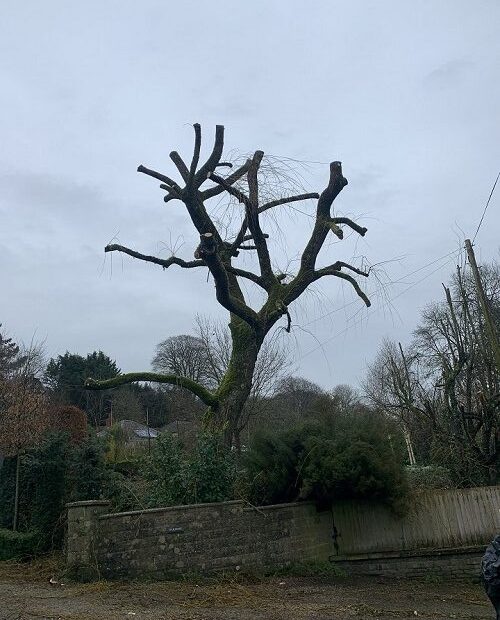City dwellers in Dorset are familiar with pollarded trees, a common sight in the urban landscape. Many street trees in cities undergo pollarding as part of an ongoing management plan.
Why is pollarding done?
Pollarding is carried out to control the horizontal growth of trees, preventing damage to overhead wires, street lights obstruction, or hindrance to vehicle movement.
By reducing shade and limiting the tree’s eventual size, pollarding also curtails root growth and lessens debris from twigs and dead leaves.
What is Pollarding?
Pollarding is an ancient and methodical pruning system where the upper branches of a tree are removed, resulting in increased growth at the cut points and a dense head of foliage and branches. The ends of the main branches have characteristic knobs in a pollarded tree.
In urban gardens, trees are pollarded to minimise shade and maintain a suitable size for the available space. Pollarding naturally controls the tree’s growth by reducing root development. The new growth resulting from pollarding can also be visually appealing. However, this practice requires skill and care to prevent permanent damage or disfigurement to the tree.
Pollarding vs. Topping
Topping a tree creates large open wounds that may lead to decay, insect infestation, and disease, ultimately causing the tree’s death or leaving it as an unsightly and unhealthy eyesore. The loss of foliage weakens the tree, compromising its structural strength and disrupting natural nutrition ratios.
On the other hand, pollarding is done during the dormant period on suitable tree species, using the tree’s natural shape, and does not cause structural damage. Instead, the tree responds by producing healthy and stable stems from the cut sites.
Topping removes the tree’s apical meristem, resulting in the growth of waterspouts that grow rapidly and haphazardly, posing a risk of failure and further damage to the tree.
Pollarded trees, in contrast, do not grow waterspouts. Instead, smaller, firmly attached branches fill out the tree’s head.
Restoring Topped Trees Expert tree surgery can mitigate the damage caused by tree topping through crown restoration. This process involves removing dead branches and poorly attached waterspouts while cultivating better waterspouts to form new branches. Although it takes several years and pruning, crown restoration can eventually rejuvenate and reform the tree’s crown.
Pollarding or Coppicing?
Coppicing is an ancient technique used on trees like hazel or chestnut, where the tree is cut back to a stump at intervals to produce long straight branches for various uses. Pollarding, on the other hand, involves reducing the tree above the main stem to limit its size, especially in urban areas.
In rural regions, the new branches resulting from pollarding are also used as sustainable wood sources.
If you require tree pollarding services in Dorchester or Dorset contact us for a free quotation. We are eager to assist you!




